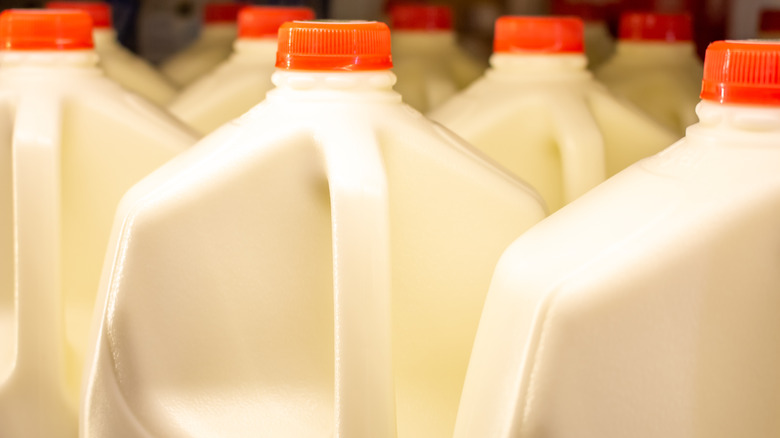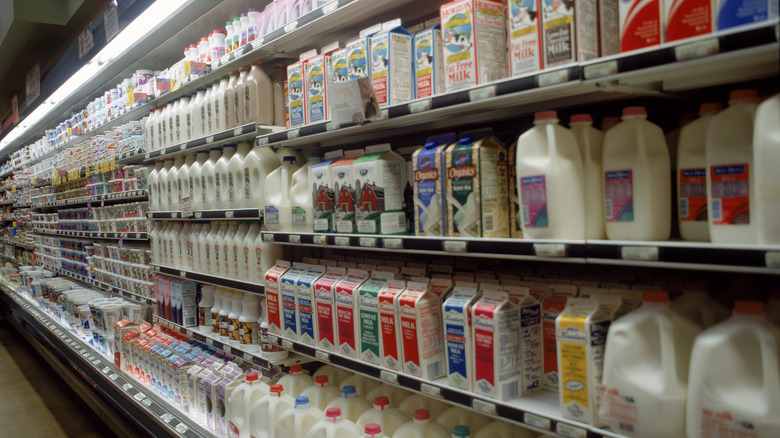Why Organic Milk Is So Much More Expensive Than Regular Milk
Milk is just milk, or is it? According to the Harvard School of Public Health, 87% water is what's really in your milk. The rest of the liquid contains a mix of "protein, fat, carbohydrates, vitamins, and minerals." Milk, whether organic or conventional, is a great source of calcium, vitamin B12, potassium, vitamin D, and protein, notes Healthline. While some studies show organic milk to contain more polyunsaturated fatty acids and slightly higher amounts of beneficial nutrients, for the most part, those differences are marginal (via Healthline).
When comparing the taste of organic and conventional milk, HuffPost found that 53% of their blind-tasting group was able to clearly identify the organic milk, and 56% preferred the taste of the organic milk. Qualitatively, however, both kinds of milk were described by some as tasting rich. Others called organic milk creamy and conventional milk watery. Despite minor differences in taste, there are major differences in cost. The United States Department of Agriculture reported that on average, the cost of a conventional gallon of whole milk was $4.44 while the price for a half-gallon of organic whole milk was $4.76 in 2022 making organic milk more than twice as expensive as conventional.
Organic milk is expensive for a variety of reasons
If health benefits and taste between organic milk and conventional milk are not wildly different, why then do consumers choose the more expensive option? It seems to be because consumers support the regulations that qualify organic milk, per HuffPost. Additionally, a reason organic food is more expensive is because of positive perceptions by the customer that organic is somehow healthier or more sustainable according to research done by Raghava R. Gundala and Anupam Singh published in PLoS One.
In order to be considered organic, The United States Department of Agriculture states that the cows producing the milk must not be treated with antibiotics, they must not be given growth hormones of any kind, and a minimum of 30% of their food must come from pasture, according to Humboldt Creamery.
These requirements come with a cost. According to Reuters, organic certification is costly and requires meticulous record keeping. If a business lapses in that certification, it can take up to three years to get recertified. Organic grain prices also continue to rise and are extremely sensitive to environmental factors, like bad weather and drought, that affect costs. Additionally, the increasing price of inputs like fuel has a significant impact on an industry that already has a slim profit margin. All of these considerations trickle down to the price a shopper sees when they reach for a gallon of milk.

